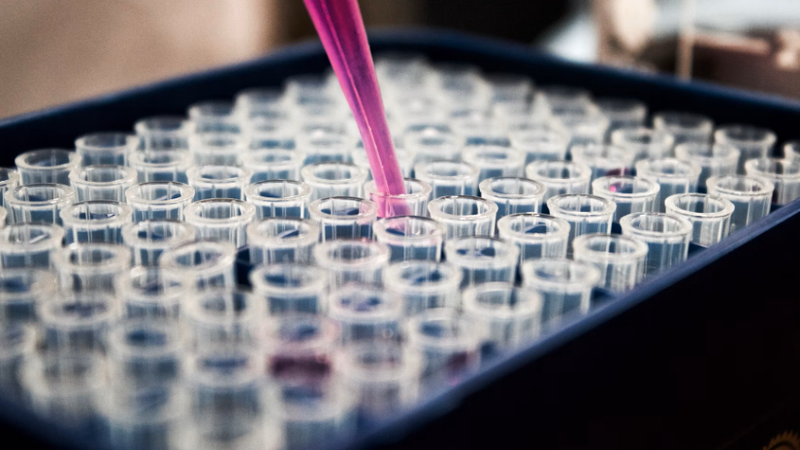Evolving market boundaries and competition policy

Share
Economist Georges Siotis co-authored a paper alongside Carmine Ornaghi and Micael Castanheira for the European Journal of Economics, focusing on the definition of economic markets in the pharmaceutical industry. In the paper, the authors show how generic entry modifies price and non-price competitive constraints over time, generating market-wide effects, and discuss the relevance of these findings in the context of ongoing cases.
Abstract
Competition investigations start with market definition, which establishes the perimeter of the competitive analysis. In this paper, we focus on the definition of economic markets in the pharmaceutical industry, where the entry of generics in different therapeutic areas provides a sequence of quasi-natural experiments involving a significant competitive shock for the originator producer. We show how generic entry modifies price and non-price competitive constraints over time, generating market-wide effects. Paradoxically, generic entry may soften the competitive pressure for brands other than the originator. We obtain these results by econometrically estimating time-varying price elasticities. We then apply the logic of the Hypothetical Monopolist Test to gauge the strength of competitive constraints under different market structures. Our results provide strong empirical support for an approach that defines relevant markets contingent on the theory of harm. We discuss the relevance of these findings in the context of ongoing cases.
Introduction
Maintaining competition in the pharmaceutical industry has long been a challenge for regulators and competition authorities. The entry of an increasing number of generics should have “naturally” led to more competition and shrunk profit margins. Generic penetration is indeed high: the generics’ share of market volume has increased substantially, reaching 85% of drug prescriptions in 2016 (Bosworth et al., 2018). However, in terms of value, they commanded a market share of 19% in the US, 26% in the UK, 21% in Germany, and below 20% in France, Belgium, and Switzerland, with similar figures in other countries (Statista, 2020).
Before any potentially anti-competitive behaviour can be assessed, “a” relevant market must first be defined. Doing so can identify economically significant competitive constraints on a specific firm (or set of firms). Firms’ exercise of market power is constrained by demand- and supply-side substitution, as well as by potential entry. Assuming an initially competitive context, market definition involves identifying which of these constraints ought to be countered (e.g., through exclusion or a merger) for the firm (or the set of merging firms) to exercise significant market power.
In this paper, we gauge whether competitive constraints evolve as a consequence of the “genericization” of a particular molecule in a therapeutic market. We show that traditional (often implicit) assumptions about the shape of the relevant market must be re-assessed in the case of the pharmaceutical industry. In particular, we find that the entry of a generic alters market boundaries, decreasing the relevance
of analyses based on pre-entry data for anticipating ex-post market power, and vice versa. For instance, a Hypothetical Monopolist with control of all generic versions of a single molecule (but not of the originator) would be able, on average, to bring about a Small but Significant Non-transitory Increase in Price (SSNIP) of at least 5%-10%, despite the presence of substitutes. That is, the market for generics of a
given originator drug represents a relevant economic market (or relevant market for short) on its own. Concomitantly, we observe a (post entry) drop in the elasticity of substitution between the drugs that had been competing with each other prior to the entry of a generic. In other words, generic entry produces a softening of intermolecular competition.
Our analysis is, in part, inspired by a number of recent competition enforcement decisions where market definition was pivotal. While market definition is often a fairly routine exercise, in a number of cases it turned out to be central: Servier/Perindopril2 (EU), GSK/Paroxetine (UK), and Vyera/Daraprim and Boehringer Ingelheim/Aggrenox (US), all reviewed in Sect. 4.
In the Servier case, the EU’s General Court concluded that the EU Commission had “made a series of errors in defining the relevant market.” At the time of writing, the appeal to the European Court of Justice (ECJ) brought by the Commission is pending resolution. In GSK/Paroxetine, the UK’s Competition Appeals Tribunal (CAT) upheld the Competition and Markets Authority’s finding of abuse, but adopted a different line of reasoning to delineate the relevant market. In Daraprim, the Federal Trade Commission (FTC) observed that a sustained price hike was direct evidence pointing to a narrow market. Meanwhile, in the Aggrenox case, the Connecticut District Court reasoned that the post-generic entry price drop was direct evidence that the relevant market only included Aggrenox and its generic versions. The econometric evidence reported below is consistent with the cogent economic reasoning of the CAT, FTC, and Connecticut District Court, while the ECJ has not yet pronounced itself.
To identify relevant markets in the pharmaceutical industry, we estimate residual demand functions under different market structures (Baker & Bresnahan, 1985;Scheffman & Spiller, 1987). Our empirical exercise is (conceptually) inspired by the logic of the Hypothetical Monopolist Test (HMT). While this approach rests on solid conceptual foundations, operationalizing the HMT is challenging. In practice, competition authorities have had to approximate the HMT by exploiting historical data (customers’ reactions to a significant price change), estimates of diversion ratios (e.g., inferred from customer surveys) or simulations, to name a few. In some rare instances, authorities have relied upon econometric estimations of demand elasticities. Although the residual demand approach and the HMT have their differences, both focus on the ability to raise prices above some competitive benchmark.
In line with most panel econometrics approaches, we rely on the concept of an economic market (in the sense of Marshall 1920). More precisely, we approach market delineation by estimating residual demands that factor in competitors’ reactions. The estimation of own and cross-price elasticities allows for the identification of the source and strength of the competitive constraints faced by firms (Davis and Garcés 2010). This is in line with the European Commission’s emphasis on (demand) substitution to delineate markets. Baker and Bresnahan (1985) and Scheffman and Spiller (1987) pioneered the implementation of the residual demand function approach in order to delineate antitrust markets for enforcement purposes.
Markets for prescription drugs are well suited to the residual demand approach. First, extremely rich product-level data are available. The dataset at our disposal comprises individual prices, quantities and promotional efforts for 125 molecules sold in the US over forty quarters. Second, markets are exposed to frequent competitive shocks in the form of generic entry, which can be precisely identified and timed. Generic entry (GE) occurs frequently, and its timing is essentially exogenous to initial market conditions: most often, the trigger is the expiration of patents that were filed several decades earlier. In our sample, 64 molecules in 31 different candidate markets lost exclusivity during the period of analysis.
We exploit GE episodes as a competition shock that can be used to measure the initial level and the change in competitive pressure faced by originators that still benefit from exclusivity. A defining feature of our procedure is the identification of the set of drugs that exercise competitive pressure on one another. More precisely, we begin our analysis by estimating cross-price elasticities, distinguishing between generic and branded competitors. Our results suggest that, on average, intermolecular competition is vibrant prior to GE, pointing to broad relevant markets comprised of various drugs. We also find that GE generates market-wide shockwaves that reshape the nature and strength of competitive constraints. On average, the entry of generic competitors for one drug shrinks the initial relevant market: the genericized drug “drops out” in that it no longer constrains the pricing power of the drugs that still enjoy exclusivity. In other words, the intensification of intramolecular rivalry resulting from GE softens intermolecular competition. This occurs because a previously significant competitive constraint fades into economic insignificance. We use this preliminary analysis as a guide for identifying potentially relevant markets.
Given the implication of the above, namely that market boundaries may be very narrow, we focus on generic producers of a given molecule—the narrowest possible market we can possibly identify with our data. Unsurprisingly, we find that own- and cross-price elasticities among generics are high, meaning they have essentially no market power and face very strong competition from other generic producers of the same molecule. With such estimates, we can proceed to more formal hypothetical monopoly tests (HMT), which we describe in Sect. 3.
Taken together, our empirical findings point to the existence of multiple candidate markets that are relevant for enforcement purposes. Our empirical results, which identify the “average effects” on an “average product” in a large market, indicate that intermolecular competition is vibrant prior to GE, largely driven by non-price instruments. Post-GE, the molecule becomes a relevant market where price competition is rife. Indeed, the relevant market post-GE may be even narrower: generic versions (i.e., excluding the originator) may constitute an antitrust market. This serves to highlight that there is no “natural” or “unique” definition of the antitrust market: the delineation of the relevant market cannot be dissociated from the nature of the competitive concern, i.e., the theory of harm.
The consubstantial nature of market definition with the theory of harm can be illustrated with simple examples inspired by the results of Sect. 3. Imagine a market composed of three originator drugs, A, B, and C. C is the market leader with a 70% market share, while A and B each command a 15% share. These drugs initially benefit from exclusivity and hence significantly constrain each other, such that a firm
controlling all three would be in a position to profitably and sustainably increase prices by 5–10% (or more). Thus, if the concern is coordinated behaviour, the candidate market should consist of A, B, and C.
In the context of generic foreclosure, the exercise involves evaluating the competitive constraints the infringing firm faces in both factual and counterfactual (i.e., absent the behaviour that is a source of concern) terms. For instance, in the case of generic foreclosure by B, the relevant competitive constraint is exercised by the generic version of B, and the relevant antitrust may well be molecular, even though
the molecular market has yet to emerge, and despite the molecule’s comparatively low initial market share. The reason is that, following generic entry, a hypothetical monopolist limited to molecule B may be able to achieve a significant and profitable price increase over and above the competitive benchmark price.
With respect to mergers, our analysis indicates that, for a given theory of harm, market delineation may change in the event of generic entry. This is because vigorous intermolecular competition may vanish quickly if the drugs competing with those of the merged entities experience GE. A merger between A and B may be cleared under the assumption that the merged entity would face significant constraints from C. Our analysis indicates that if C is close to expiry, and if there are no product launches in the near future, the merger between A and B would create an entity that could rapidly gain significant market power. The reason underpinning C’s competitive constraint fading into irrelevance is the dramatic drop in promotional spending that follows GE (Castanheira et al., 2019; Lakdawalla & Philipson, 2012). Such a situation would represent an instance of Type II error (an anticompetitive merger being waved through).
The suggestion that the relevant market should be made contingent on the infringement (actual or potential) has been discussed for some time (Salop, 2000, Rey et al. 2005, and Glasner & Sullivan, 2020 for an in-depth exposition and analysis), but enforcers and courts have so far been reluctant to endorse the approach, at least in the European Union.
The remainder of the paper is organized as follows. Section 2 describes the dynamics of competition in the pharmaceutical industry before and after patent expiration. In Sect. 3, we describe the data, implement our empirical analysis, and gauge how competitive constraints evolve over time. We also assess pricing power under different market structures. Section 4 discusses the potential implications of our results in light of past and ongoing cases. Section 5 concludes.
This paper was originally published for the European Journal of Law and Economics here. The views expressed are those of the authors only and do not necessarily represent the views of Compass Lexecon, its management, its subsidiaries, its affiliates, its employees, or clients.
Georges Siotis, Carmine Ornaghi, Micael Castanheira, Evolving market boundaries and competition policy enforcement in the pharmaceutical industry, European Journal of Law and Economics (2023).


